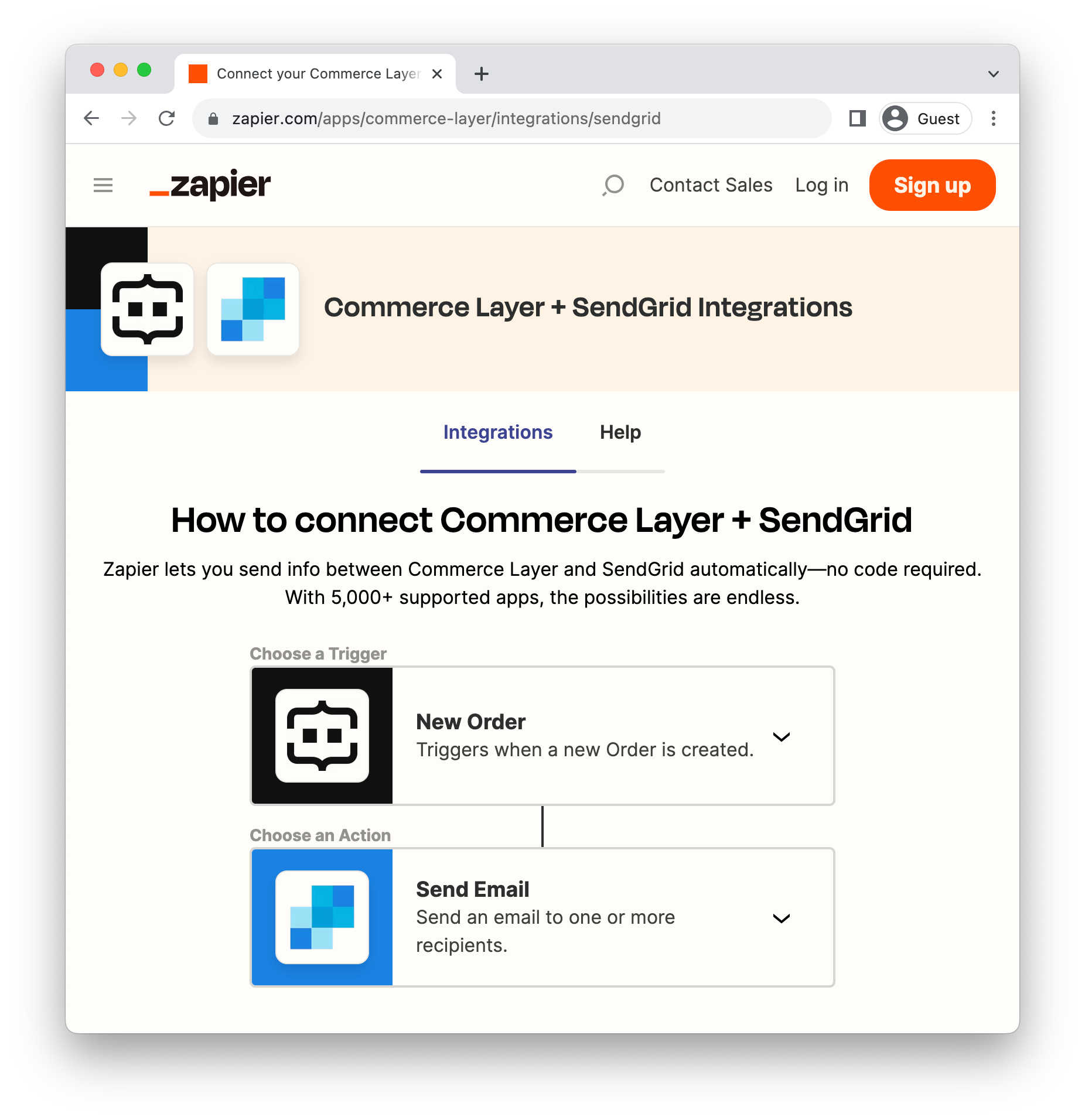Composing an ecommerce stack using API-first solutions gives you the flexibility to automate many integrations and workflows without coding. Using platforms like Zapier, Patchworks, and Alloy, you can connect different apps visually and save tons of time.
Basically, any service can be combined with any other service to create thousands of possible automations. The output of a block can also be used as an input for another, creating a chain. It is only through a clean separation of concerns that we can achieve this level of flexibility. A service is responsible for a specific function, leveraging specialized components to perform other functions. In addition, each building block can be easily swapped with an alternative, preventing vendor lock-in.
Integrations are constantly monitored. In case something goes wrong, you can set up an alert so you can be notified and fix it right away. Some tools also have an automatic retry mechanism, so any temporary problems can be fixed automatically. By doing so, you not only gain unprecedented levels of automation, but also one you can trust and control.
How it works
Automation platforms allow you to model workflows and integrations using triggers and actions. Every application exposes a variety of triggers and actions that you can choose from to build an integration based on the type of service. Ecommerce platforms, for instance, may have triggers like "Order has been placed" and "Payment has been captured" and actions like "Approve order" and "Apply promotion". Instead, a transactional email service could expose a "Send email" action. By connecting the "Order has been placed" trigger and the "Send email" action, you can send an email confirmation every time an order is placed.

At any time, if you're not satisfied with your commerce platform or your transactional email provider, you can replace them with alternative services that expose the same triggers and actions, while keeping the other side of the workflow unchanged.
In essence, the automation platform serves as a middleware to decouple connected services. Although this concept is not new, the most modern solutions like the ones mentioned above provide you with a friendly UI and self-service model that make building workflows easier than ever.
Example use cases
It is possible to automate a wide range of use cases. Here is a list of the most common integrations that most businesses must implement in order to run their ecommerce businesses effectively:
- Import SKUs, prices, and stock from an ERP/OMS
- Validate and approve an order as soon as it is placed
- Send an order confirmation email to a customer
- Add a line to a spreadsheet when an order is placed
- Capture payment before shipping
- When a payment is captured, print and send an invoice
- Send a shipment confirmation email to a customer
- When a digital good is purchased, deliver a download URL
- Trigger an abandoned cart recovery campaign
- Unpublish a product when it runs out of stock
- When an item is back in stock, notify the customer
- Subscribe a customer to a newsletter
- Change a customer loyalty program tier
- Send a birthday gift to a customer
- Export new orders to an ERP
- Export new customers to a CRM
- [add your workflow here]
You'll notice that all of these integrations are asynchronous and mostly involve backend processing. This is a demonstration that the concept of composable commerce encompasses more than just the front-end layer, but also order management, marketing automation, and other back-end functions. It's a broader concept that can benefit all departments. As a matter of fact, order fulfillment is often a process rather than an application, and a real OMS is by definition a composable system.
Automation is fun!
We developers love automating everything we can. An automation platform makes integration so easy that you can invent any workflow without writing any code, redefining software development itself. In addition, it can be a lot of fun!
For example, what about a physical button that can trigger any action by pressing it? This is the idea behind Bt.tn, a programmable IoT device that delivers a webhook with a simple push. By tapping on a small screen, you could do anything, including ordering something online. Probably not the most useful use case, but definitely something any developer would love to see in action, right? Honestly, I preferred when their device was literally a big red button. Anyway, this won't stop me from giving it a try.